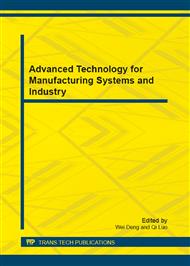p.175
p.180
p.186
p.192
p.197
p.203
p.209
p.213
p.219
Study on the Simulation Model of the Production Capacity Decision in Hydrogen Fuel Cell Vehicles Industry
Abstract:
Effective utilization and expansion of production capacity has crucial cost implications, and arguably drives the profitability of the operation in the hydrogen fuel cell vehicles (HFCVs) industry. We develop a production capacity model for a HFCVs manufacturer decision, which is expressed by the market and the assumptions of information usage. From three factors of equipment construction, the rapid advancement of the HFCV technology and the inconsistent between the manufacturing capacity and the effective capacity, we expressed the basic mathematic descriptions of question. Then the computing model is programmed in the EXCEL interface. After the operation of the simulation, the different scenarios show that demand and capacity variability has clear impaction on the decision. The observation provides perception on the production capacity decision in HFCVs industry as capacity expansion and the cell technologies arise. Both result in different cost type and the cost of the transition. It also implicates that not the computer simulation but the information technology application are important to improve the industry decisions.
Info:
Periodical:
Pages:
197-202
Citation:
Online since:
November 2012
Authors:
Price:
Сopyright:
© 2012 Trans Tech Publications Ltd. All Rights Reserved
Share:
Citation:


